Mathematics is an essential subject in a child’s education, and it’s crucial to make math concepts accessible and enjoyable for them. One of the fundamental principles in math is the concept of area. As a parent, you might be wondering how to explain area to your child in a way that they can understand. In this section, we will provide you with simple and effective tips on how to explain the concept of area to your child.
Children learn best through hands-on experiences, so it’s important to break down the concept of area in a child-friendly manner. By using objects and shapes that they are familiar with, you can help them visualize the concept easily. We will explore creative ways to introduce the concept of area to children using objects and shapes, and provide engaging activities that make learning about area enjoyable.
Key Takeaways:
- Explaining area to your child can be challenging, but breaking it down in a child-friendly manner can make it easier.
- Using hands-on experiences and objects that children are familiar with can help them visualize the concept of area.
- Engaging activities can make learning about area enjoyable for children.
What is Area and Why is it Important?
Area is a mathematical concept that measures the amount of space a two-dimensional shape takes up. It’s essential to learn about area because it helps us understand the world around us, from the size of a room to the amount of material needed to make a dress. It’s a fundamental concept that lays the foundation for learning more advanced math in the future.
But what exactly is area? In simple terms, it’s the size of a surface. Let’s say you have a rectangular rug in your room. You want to know how much space it takes up so you can make sure it fits nicely in the space. To determine its area, you would multiply the length of the rug by its width. This calculation would give you the area of the rug in square units, such as square feet.
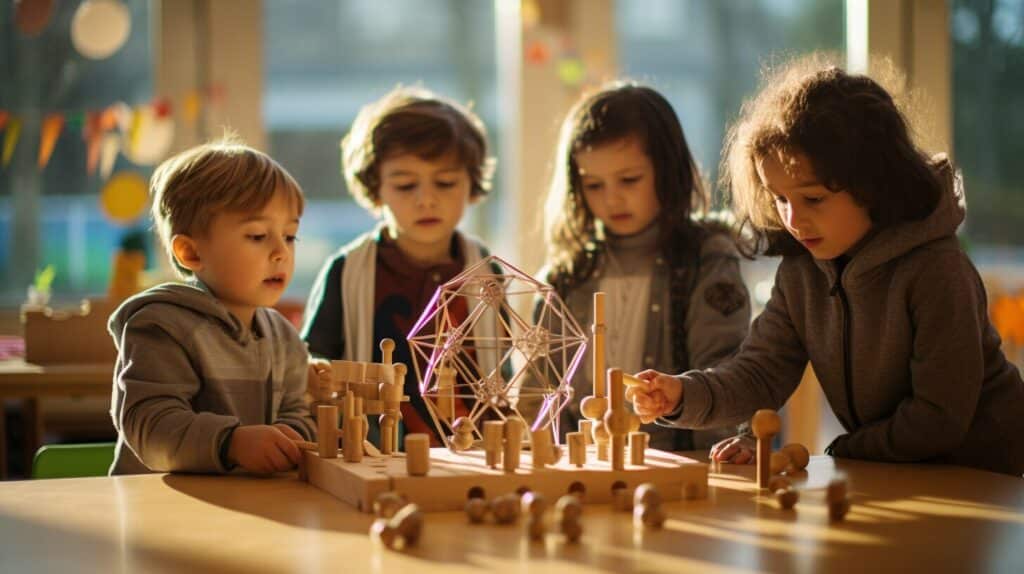
Area is a crucial concept that your child should learn as early as possible. By understanding area, children develop spatial awareness and become more adept at problem-solving. It’s also a useful skill to have when taking geometry classes in school or pursuing a career in any field that requires an understanding of spatial dimensions, such as architecture or engineering.
Introducing Area through Objects and Shapes
To help your child understand the concept of area, you can use hands-on activities with everyday objects and shapes. This makes learning about area more fun and interactive, and helps children grasp the concept more easily.
One simple way to introduce the concept of area is to use squares or rectangles of different sizes. Cut out shapes from cardboard or paper, and ask your child to measure the length and width of each shape. Then, have them multiply these two numbers to find the area. You can also ask them to compare the areas of the different shapes to see which has the largest or smallest area.
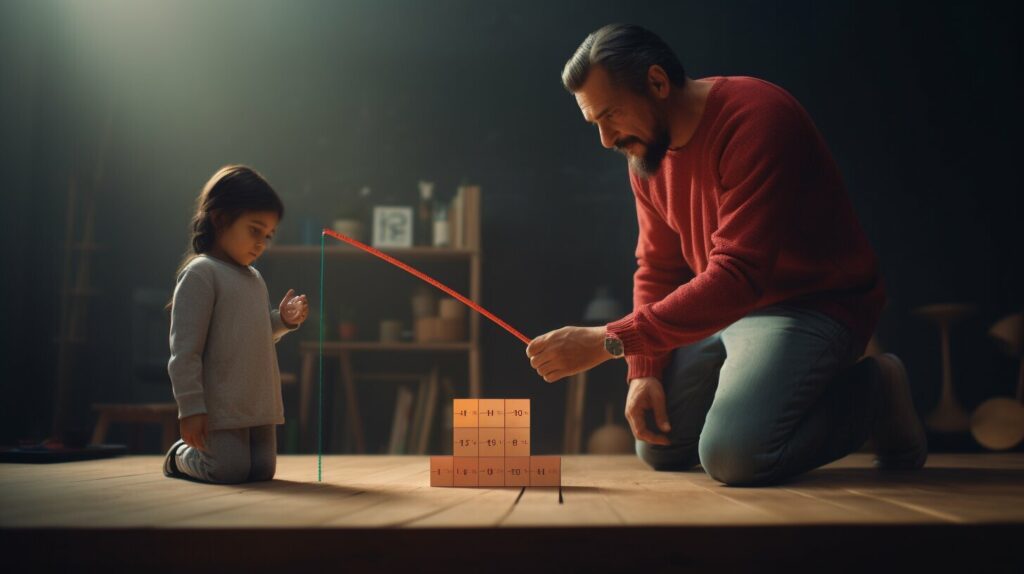
Another fun activity is to measure the area of objects in your home. For example, you can use a measuring tape to measure the length and width of a rug, table, or bookshelf. Then, have your child multiply these two numbers to find the area of each object.
Using blocks or tiles is another great way to help children visualize the concept of area. You can ask your child to arrange the blocks or tiles into different shapes, and then have them count the number of blocks or tiles in each shape. This will help them understand that the area of a shape is made up of smaller units.
By using hands-on activities with everyday objects and shapes, you can introduce the concept of area to your child in a fun and engaging way. This will help them develop a solid foundation in math, and set them up for success in the future.
Fun Activities to Teach Area to Children
Learning about area doesn’t have to be boring! Try these fun activities to engage your child and make math more enjoyable:
1. Floor Plan Fun
Create a floor plan of your house or a room using graph paper. Have your child measure each room and calculate its area. Then, draw the furniture to scale and cut them out. Your child can rearrange the furniture to different rooms, calculating the area of the new configurations.
2. Shape Hunt
Go on a shape hunt around the house, neighborhood or park. Encourage your child to find as many shapes as possible and then measure each shape to calculate its area. Use a camera to take pictures of each shape and the area measurement. Print the pictures and create a scrapbook.
3. Puzzle Time
Create jigsaw puzzles with your child using cardstock and decorate with pictures or patterns. Cut the cardstock into various shapes, each with a specific area measurement. Have your child piece together the puzzles and measure the total area of each puzzle.
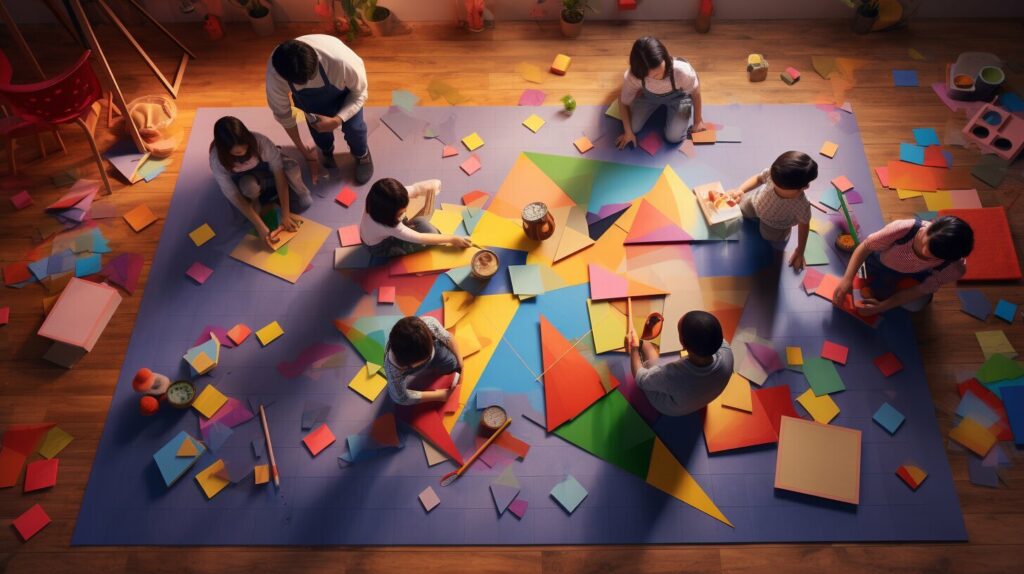
4. Outdoor Adventures
Take your child on a nature walk and collect objects of various shapes and sizes such as leaves, stones or sticks. Have your child measure the area of each object and create a list of objects in order of largest to smallest area. You can also create a scavenger hunt to find objects of specific area measurements.
5. Cooking Calculations
Cooking is a great way to introduce area concepts to your child. Have them measure the area of each ingredient and calculate the area of the final dish. This will also teach them the importance of accuracy in measuring ingredients for cooking.
By incorporating these fun activities into your child’s learning, they will have a better understanding and appreciation for the concept of area. Encourage their curiosity and creativity and make math a positive experience!
Real-Life Examples of Area
To help your child better understand the concept of area, it can be helpful to relate it to real-life examples that they can see and touch. Here are a few examples:
| Object | Area |
|---|---|
| A book | Width x Height of the book cover |
| A room | Length x Width of the room |
| A piece of paper | Length x Width of the paper |
Ask your child to measure the objects and calculate the area. This makes learning about area more interactive and practical.
Another way to introduce area is by using food. Cut a pizza or a cake into slices and ask your child to calculate the area of each slice. This activity teaches them the concept of area in a fun and delicious way.

As you go about your day, point out different objects and ask your child to estimate their area. For example, the kitchen table or the living room carpet. These everyday objects can help reinforce the concept of area and make it more tangible for your child.
Visualizing Area with Drawings and Diagrams
One of the best ways to help children understand the concept of area is to use drawings and diagrams. These visual aids can help children to see the shapes and sizes of objects more clearly, making it easier for them to understand the concept of area.
Start by showing your child different shapes and ask them to visualize the area of each shape. Draw each shape on a piece of paper, labeling the length and width of each side. This will help your child to understand how to calculate the area of each shape using a simple formula.
You can also use diagrams to show your child how to calculate the area of irregular shapes. Draw an irregular shape on a piece of paper and have your child divide the shape into smaller, simpler shapes. They can then calculate the area of each smaller shape, and add them together to find the total area of the irregular shape.
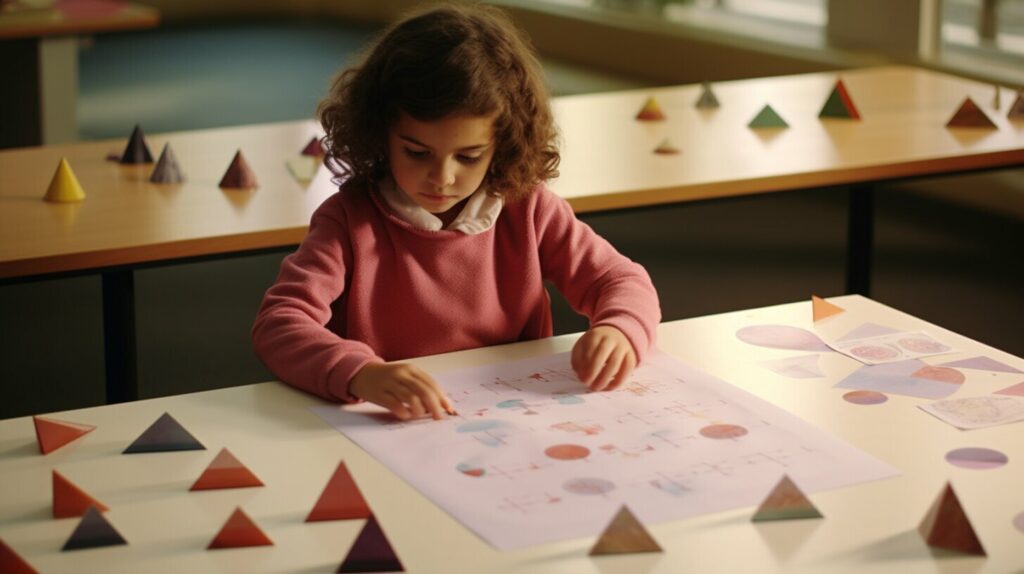
Another fun way to help your child visualize area is to use objects like Legos or building blocks. Have your child build a square or rectangle using the blocks, and then count the number of blocks on each side. This will help your child to understand the relationship between the length and width of a shape and its area.
As your child becomes more comfortable with the concept of area, you can challenge them with more advanced diagrams and shapes, such as triangles and circles. Visual aids are an excellent way to make math fun and engaging for your child while reinforcing their understanding of area.
Building on Area Skills: Perimeter and Volume
Now that your child has a good understanding of area, it’s time to introduce related concepts such as perimeter and volume. These concepts build on the foundation of understanding area and help children develop a more well-rounded understanding of geometry.
Perimeter
Perimeter is the distance around the outside of a shape. It is the sum of all the sides of a shape. For example, a square with sides of length 4 units has a perimeter of 16 units (4 + 4 + 4 + 4 = 16). You can introduce perimeter to your child by using objects they are familiar with, like a book or a piece of paper. Ask them to measure the sides of the object and add them together to find the perimeter.

Another way to reinforce the concept of perimeter is through drawing. Have your child draw different shapes and then measure and calculate the perimeter of each shape. This interactive method will help them understand the concept better and make it more enjoyable.
Volume
Volume is the amount of space inside a 3-dimensional object. It is measured in cubic units such as cubic centimeters (cm³) or cubic inches (in³). You can introduce volume to your child by using objects they are familiar with, like a building block or a box. Ask them to count the number of blocks in the box and then multiply the length, width, and height of the box to find the volume.
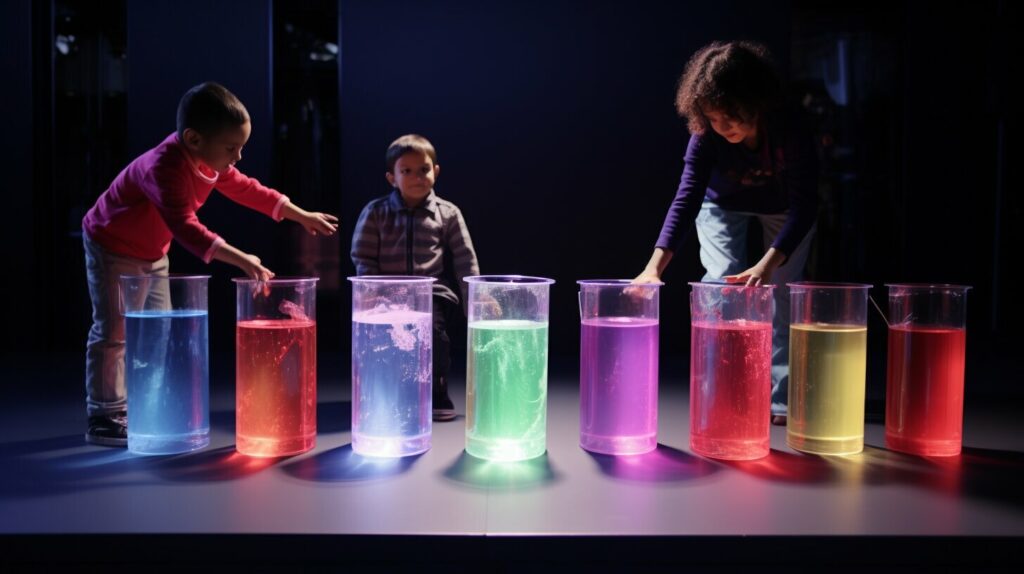
Another way to reinforce the concept of volume is through hands-on activities. Have your child fill different containers with water and then measure the volume of the water using a measuring cup. This interactive method will help them understand the concept better and make it more enjoyable.
By introducing your child to the related concepts of perimeter and volume, you are helping them develop a more comprehensive understanding of geometry that will serve them well throughout their academic and personal lives.
Encouraging and Reinforcing Area Skills
Now that you’ve introduced your child to the concept of area, it’s important to encourage and reinforce their understanding. Here are some tips to help keep your child engaged:
- Make it fun: Incorporate area into everyday activities, such as measuring ingredients when cooking or calculating the area of a room when rearranging furniture. This will help your child see the practical applications of math in their daily life.
- Use positive reinforcement: Praise your child for their efforts and progress. This will encourage them to continue exploring and learning about math.
- Provide real-world examples: Point out examples of area in your surroundings, such as the size of a room or the area of a garden. This will help your child connect the concept to their experiences and solidify their understanding.
Additionally, continue to provide opportunities for your child to practice their area skills through interactive games and exercises. This will help them retain the information and develop a strong foundation for future math concepts.
Remember, learning about math should be a fun and engaging experience for your child. By using these tips, you can help your child develop a positive attitude towards math and set them up for success in the future.
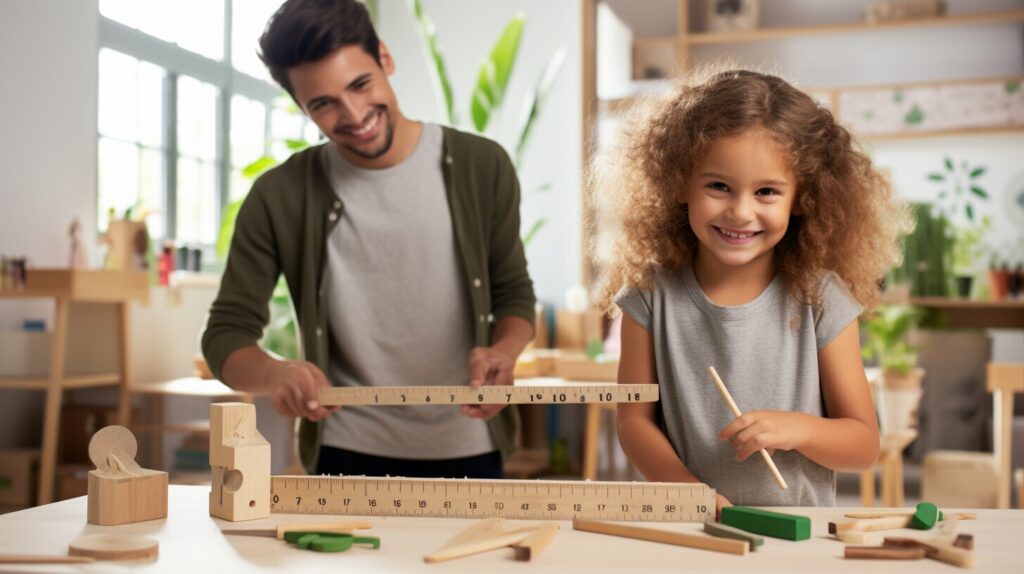
Conclusion
Teaching your child about the concept of area can be a fun and engaging process. By using child-friendly language, hands-on activities, and real-life examples, you can help your child develop a deeper understanding of this important math concept.
Remember to use praise and positive reinforcement to encourage your child’s learning, and to reinforce their skills through continued practice and creative learning opportunities. Building on their understanding of area by introducing related concepts, such as perimeter and volume, can further enrich their mathematical knowledge.
Overall, making math accessible and enjoyable for children is key to fostering their love of learning and helping them succeed academically. With these simple tips and strategies, you can help your child develop the skills and confidence they need to tackle any math challenge.
Can You Use the Same Tips and Techniques to Explain Area to a Child as You Would to Explain the Word ‘Why’?
When teaching children about the concept of area, the same tips and techniques used to explain the word ‘why’ may not apply. Understanding area requires visual aids, hands-on activities, and simplified language. However, if we employ the tips for explaining the word ‘why’, such as using examples and fostering curiosity, we can enhance a child’s understanding of area by making it relatable and engaging.
FAQ
Q: How can I explain the concept of area to my child?
A: Explaining area to a child can be made simple and engaging by breaking it down into child-friendly terms. Try using hands-on activities, real-life examples, and visual aids to help them understand the concept better.
Q: Why is understanding area important for children?
A: Understanding area is important for children as it helps them make sense of the space around them. It is a fundamental concept that is used in various fields, such as architecture, design, and even everyday tasks like measuring and arranging objects.
Q: What are some creative ways to introduce the concept of area to children?
A: Introducing area to children can be done through hands-on activities using objects and shapes. You can encourage them to measure and compare areas, create artwork using different shapes, or even play area-related games.
Q: Can you suggest some fun activities to teach area to children?
A: Yes! There are many fun activities you can try with your child to teach them about area. Some examples include creating shape collages, building with blocks, or playing interactive area games like “Area Bingo.”
Q: How can I help my child understand the practical applications of area?
A: To help your child understand how area applies to real life, you can provide them with examples using everyday objects and situations. For instance, you can discuss the area of their bedroom, the size of a pizza slice, or the amount of space needed to plant a garden.
Q: How can I help my child visualize the concept of area?
A: One effective way to help your child visualize area is by using drawings and diagrams. Encourage them to draw shapes and label their areas, or create diagrams that represent different areas. This will aid in their understanding of the concept.
Q: What are the related concepts of perimeter and volume?
A: Perimeter and volume are related to the concept of area. Perimeter refers to the total length around the edges of a shape, while volume measures the amount of space occupied by a three-dimensional object. Understanding area provides a foundation for understanding these concepts.
Q: How can I encourage and reinforce my child’s area skills?
A: There are several ways you can encourage and reinforce your child’s area skills. Praising their efforts, providing positive reinforcement, and using real-world scenarios to practice and apply their knowledge are effective strategies. Additionally, engaging in activities and games that involve area will help them develop and retain their skills.






